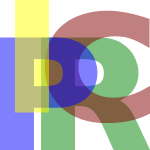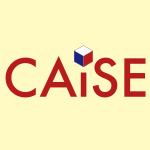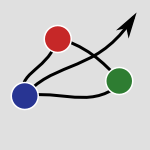Tag #principle
49 papers:
 ICPR-2018-CuradoELH18a #graph
ICPR-2018-CuradoELH18a #graph- Semi-supervised Graph Rewiring with the Dirichlet Principle (MC, FE, MAL, ERH), pp. 2172–2177.
 CASE-2018-BettaharCBCL #automation #novel #precise
CASE-2018-BettaharCBCL #automation #novel #precise- Novel Strategy for High Precision Automated Robotic Positioning based on Fabry-Perot Interferometry Principle (HB, CC, FB, NC, PL), pp. 1441–1447.
 CSL-2017-BorlidoCGK
CSL-2017-BorlidoCGK - Stone Duality and the Substitution Principle (CB, SC, MG, AK), p. 20.
 ICSME-2016-KhourySH #comprehension #using
ICSME-2016-KhourySH #comprehension #using- Key Elements Extraction and Traces Comprehension Using Gestalt Theory and the Helmholtz Principle (RK, LS, AHL), pp. 478–482.
 IJCAR-2016-CernaL #order
IJCAR-2016-CernaL #order- Schematic Cut Elimination and the Ordered Pigeonhole Principle (DMC, AL), pp. 241–256.
 ICALP-v2-2015-AisenbergBBCI #proving
ICALP-v2-2015-AisenbergBBCI #proving- Short Proofs of the Kneser-Lovász Coloring Principle (JA, MLB, SB, AC, GI), pp. 44–55.
 ITiCSE-2014-MI14a #problem #using
ITiCSE-2014-MI14a #problem #using- Problem-solving using the extremality principle (JM, SI), pp. 87–92.
 KR-2014-DeneckerV #induction #revisited #semantics
KR-2014-DeneckerV #induction #revisited #semantics- The Well-Founded Semantics Is the Principle of Inductive Definition, Revisited (MD, JV).
 MLDM-2012-SapkotaBS #grammar inference #using
MLDM-2012-SapkotaBS #grammar inference #using- Unsupervised Grammar Inference Using the Minimum Description Length Principle (US, BRB, APS), pp. 141–153.
 ECIR-2011-ZellhoferFSLR #information retrieval #towards
ECIR-2011-ZellhoferFSLR #information retrieval #towards- Towards Quantum-Based DB+IR Processing Based on the Principle of Polyrepresentation (DZ, IF, IS, ML, KvR), pp. 729–732.
 SAT-2011-BennettS #using
SAT-2011-BennettS #using- Model Counting Using the Inclusion-Exclusion Principle (HB, SS), pp. 362–363.
 ICML-2010-ZiebartBD #interactive #modelling
ICML-2010-ZiebartBD #interactive #modelling- Modeling Interaction via the Principle of Maximum Causal Entropy (BDZ, JAB, AKD), pp. 1255–1262.
 ICPR-2010-Panagiotakis #modelling #segmentation
ICPR-2010-Panagiotakis #modelling #segmentation- Simultaneous Segmentation and Modelling of Signals Based on an Equipartition Principle (CP), pp. 85–88.
 SAC-2010-AlmeidaYA10a #using
SAC-2010-AlmeidaYA10a #using- Filtering spams using the minimum description length principle (TAA, AY, JA), pp. 1854–1858.
 SAC-2010-CaetanoST #composition #process
SAC-2010-CaetanoST #composition #process- A method for business process decomposition based on the separation of concerns principle (AC, ARS, JMT), pp. 79–85.
 LICS-2010-Herbelin #logic #markov
LICS-2010-Herbelin #logic #markov- An Intuitionistic Logic that Proves Markov’s Principle (HH), pp. 50–56.
 ASPLOS-2009-CameronL #architecture #induction #parallel
ASPLOS-2009-CameronL #architecture #induction #parallel- Architectural support for SWAR text processing with parallel bit streams: the inductive doubling principle (RDC, DL), pp. 337–348.
 SIGIR-2008-Wong
SIGIR-2008-Wong - Guilt by association as a search principle (LW), p. 2.
 VMCAI-2007-WachterW
VMCAI-2007-WachterW - The Spotlight Principle (BW, BW), pp. 182–198.
 CAiSE-2006-HaggmarkA #analysis #logic #why
CAiSE-2006-HaggmarkA #analysis #logic #why- Why Software Engineers Do Not Keep to the Principle of Separating Business Logic from Display: A Method Rationale Analysis (MH, PJÅ), pp. 399–413.
 ICPR-v1-2006-MiaoQS #composition #using
ICPR-v1-2006-MiaoQS #composition #using- Unsupervised Decomposition of Mixed Pixels Using the Maximum Entropy Principle (LM, HQ, HS), pp. 1067–1070.
 ICPR-v4-2006-KropotovPVV #kernel #on the #using
ICPR-v4-2006-KropotovPVV #kernel #on the #using- On Kernel Selection in Relevance Vector Machines Using Stability Principle (DK, NP, OV, DV), pp. 233–236.
 ICALP-2005-BradleyMS #ranking
ICALP-2005-BradleyMS #ranking- The Polyranking Principle (ARB, ZM, HBS), pp. 1349–1361.
 ECIR-2005-DominichGHK
ECIR-2005-DominichGHK - “Beauty” of the World Wide Web-Cause, Goal, or Principle (SD, JG, MH, TK), pp. 67–80.
 ICML-2003-WangSPZ #learning #modelling
ICML-2003-WangSPZ #learning #modelling- Learning Mixture Models with the Latent Maximum Entropy Principle (SW, DS, FP, YZ), pp. 784–791.
 MLDM-2003-TanakaU #analysis #component #multi #using
MLDM-2003-TanakaU #analysis #component #multi #using- Discover Motifs in Multi-dimensional Time-Series Using the Principal Component Analysis and the MDL Principle (YT, KU), pp. 252–265.
 HT-2002-YamamotoNA #authoring #design #development #hypermedia #interactive
HT-2002-YamamotoNA #authoring #design #development #hypermedia #interactive- Spatial Hypertext for linear-information authoring: Interaction design and system development based on the ART Design principle (YY, KN, AA), pp. 35–44.
 ICSM-2002-Curtis #maturity
ICSM-2002-Curtis #maturity- The Principle of Organizational Maturity and E-Type Dynamics (BC), p. 68.
 STOC-2002-Raz02a #bound
STOC-2002-Raz02a #bound- Resolution lower bounds for the weak pigeonhole principle (RR), pp. 553–562.
 TestCom-2002-SeolKC #communication #generative #multi #protocol #testing
TestCom-2002-SeolKC #communication #generative #multi #protocol #testing- Interoperability Test Generation for Communication Protocols based on Multiple Stimuli Principle (SS, MK, STC), pp. 151–168.
 RE-2001-PaigeO
RE-2001-PaigeO - The Single Model Principle (RFP, JSO), pp. 292–293.
 STOC-2001-PitassiR #bound
STOC-2001-PitassiR #bound- Regular resolution lower bounds for the weak pigeonhole principle (TP, RR), pp. 347–355.
 ICALP-2000-AtseriasGG #proving
ICALP-2000-AtseriasGG #proving- Monotone Proofs of the Pigeon Hole Principle (AA, NG, RG), pp. 151–162.
 GCSE-2000-KlaerenPRS #composition #contract #design
GCSE-2000-KlaerenPRS #composition #contract #design- Aspect Composition Applying the Design by Contract Principle (HK, EP, AR, AS), pp. 57–69.
 STOC-2000-MacielPW #proving
STOC-2000-MacielPW #proving- A new proof of the weak pigeonhole principle (AM, TP, ARW), pp. 368–377.
 SAC-1999-LuR #functional #information management #knowledge base #named
SAC-1999-LuR #functional #information management #knowledge base #named- KAT: A Knowledge Acquisition Tool for Acquiring Functional Knowledge Based Upon the No-Causality-In-Functional Principle (CL, DJR), pp. 8–13.
 CSL-1997-BussP
CSL-1997-BussP - Resolution and the Weak Pigeonhole Principle (SRB, TP), pp. 149–156.
 ICPR-1996-AkhmetshinL #difference #fourier #image #re-engineering
ICPR-1996-AkhmetshinL #difference #fourier #image #re-engineering- The reconstruction of signals and images from the noisy Fourier transform phase by means of the generalized difference principle (AMA, IL), pp. 370–375.
 ICPR-1996-AugustSZ
ICPR-1996-AugustSZ - Fragment grouping via the principle of perceptual occlusion (JA, KS, SWZ), pp. 3–8.
 ICPR-1996-TanakaI #algorithm #modelling #statistics
ICPR-1996-TanakaI #algorithm #modelling #statistics- Statistical-mechanical algorithm in MRF model based on variational principle (KT, MI), pp. 381–388.
 IWPTS-1993-WittemanW #network #testing #using
IWPTS-1993-WittemanW #network #testing #using- ATM Broadband Network Testing Using the Ferry Principle (MFW, RCvW), pp. 125–138.
 VLDB-1992-Raz #multi #using
VLDB-1992-Raz #multi #using- The Principle of Commitment Ordering, or Guaranteeing Serializability in a Heterogeneous Environment of Multiple Autonomous Resource Mangers Using Atomic Commitment (YR), pp. 292–312.
 STOC-1992-BeameIKPPW #bound #exponential
STOC-1992-BeameIKPPW #bound #exponential- Exponential Lower Bounds for the Pigeonhole Principle (PB, RI, JK, TP, PP, ARW), pp. 200–220.
 ICLP-1991-Haridi #logic programming #parallel
ICLP-1991-Haridi #logic programming #parallel- Parallel Logic Programming based on the Andorra Principle (SH), p. 943.
 ISLP-1991-Nakayama #program transformation #proving
ISLP-1991-Nakayama #program transformation #proving- Program Transformation under the Principle of Proof as Program (HN), pp. 626–640.
 POPL-1990-Russell #network #on the
POPL-1990-Russell #network #on the- On Oraclizable Networks and Kahn’s Principle (JRR), pp. 320–328.
 CADE-1984-Paul
CADE-1984-Paul - A New Interpretation of the Resolution Principle (EP), pp. 333–355.
 POPL-1980-DemersD80a #design
POPL-1980-DemersD80a #design- “Type-Completeness” as a Language Design Principle (AJD, JED), pp. 234–244.
 SOSP-1969-Hellerman #scheduling
SOSP-1969-Hellerman #scheduling- Complementary replacement: a meta scheduling principle (HH), pp. 43–46.
 ICPR-2018-CuradoELH18a #graph
ICPR-2018-CuradoELH18a #graph CASE-2018-BettaharCBCL #automation #novel #precise
CASE-2018-BettaharCBCL #automation #novel #precise CSL-2017-BorlidoCGK
CSL-2017-BorlidoCGK  ICSME-2016-KhourySH #comprehension #using
ICSME-2016-KhourySH #comprehension #using IJCAR-2016-CernaL #order
IJCAR-2016-CernaL #order ICALP-v2-2015-AisenbergBBCI #proving
ICALP-v2-2015-AisenbergBBCI #proving ITiCSE-2014-MI14a #problem #using
ITiCSE-2014-MI14a #problem #using KR-2014-DeneckerV #induction #revisited #semantics
KR-2014-DeneckerV #induction #revisited #semantics MLDM-2012-SapkotaBS #grammar inference #using
MLDM-2012-SapkotaBS #grammar inference #using ECIR-2011-ZellhoferFSLR #information retrieval #towards
ECIR-2011-ZellhoferFSLR #information retrieval #towards SAT-2011-BennettS #using
SAT-2011-BennettS #using ICML-2010-ZiebartBD #interactive #modelling
ICML-2010-ZiebartBD #interactive #modelling ICPR-2010-Panagiotakis #modelling #segmentation
ICPR-2010-Panagiotakis #modelling #segmentation SAC-2010-AlmeidaYA10a #using
SAC-2010-AlmeidaYA10a #using SAC-2010-CaetanoST #composition #process
SAC-2010-CaetanoST #composition #process LICS-2010-Herbelin #logic #markov
LICS-2010-Herbelin #logic #markov ASPLOS-2009-CameronL #architecture #induction #parallel
ASPLOS-2009-CameronL #architecture #induction #parallel SIGIR-2008-Wong
SIGIR-2008-Wong  VMCAI-2007-WachterW
VMCAI-2007-WachterW  CAiSE-2006-HaggmarkA #analysis #logic #why
CAiSE-2006-HaggmarkA #analysis #logic #why ICPR-v1-2006-MiaoQS #composition #using
ICPR-v1-2006-MiaoQS #composition #using ICPR-v4-2006-KropotovPVV #kernel #on the #using
ICPR-v4-2006-KropotovPVV #kernel #on the #using ICALP-2005-BradleyMS #ranking
ICALP-2005-BradleyMS #ranking ECIR-2005-DominichGHK
ECIR-2005-DominichGHK  ICML-2003-WangSPZ #learning #modelling
ICML-2003-WangSPZ #learning #modelling MLDM-2003-TanakaU #analysis #component #multi #using
MLDM-2003-TanakaU #analysis #component #multi #using HT-2002-YamamotoNA #authoring #design #development #hypermedia #interactive
HT-2002-YamamotoNA #authoring #design #development #hypermedia #interactive ICSM-2002-Curtis #maturity
ICSM-2002-Curtis #maturity STOC-2002-Raz02a #bound
STOC-2002-Raz02a #bound TestCom-2002-SeolKC #communication #generative #multi #protocol #testing
TestCom-2002-SeolKC #communication #generative #multi #protocol #testing RE-2001-PaigeO
RE-2001-PaigeO  STOC-2001-PitassiR #bound
STOC-2001-PitassiR #bound ICALP-2000-AtseriasGG #proving
ICALP-2000-AtseriasGG #proving GCSE-2000-KlaerenPRS #composition #contract #design
GCSE-2000-KlaerenPRS #composition #contract #design STOC-2000-MacielPW #proving
STOC-2000-MacielPW #proving SAC-1999-LuR #functional #information management #knowledge base #named
SAC-1999-LuR #functional #information management #knowledge base #named CSL-1997-BussP
CSL-1997-BussP  ICPR-1996-AkhmetshinL #difference #fourier #image #re-engineering
ICPR-1996-AkhmetshinL #difference #fourier #image #re-engineering ICPR-1996-AugustSZ
ICPR-1996-AugustSZ  ICPR-1996-TanakaI #algorithm #modelling #statistics
ICPR-1996-TanakaI #algorithm #modelling #statistics IWPTS-1993-WittemanW #network #testing #using
IWPTS-1993-WittemanW #network #testing #using VLDB-1992-Raz #multi #using
VLDB-1992-Raz #multi #using STOC-1992-BeameIKPPW #bound #exponential
STOC-1992-BeameIKPPW #bound #exponential ICLP-1991-Haridi #logic programming #parallel
ICLP-1991-Haridi #logic programming #parallel ISLP-1991-Nakayama #program transformation #proving
ISLP-1991-Nakayama #program transformation #proving POPL-1990-Russell #network #on the
POPL-1990-Russell #network #on the CADE-1984-Paul
CADE-1984-Paul  POPL-1980-DemersD80a #design
POPL-1980-DemersD80a #design SOSP-1969-Hellerman #scheduling
SOSP-1969-Hellerman #scheduling











